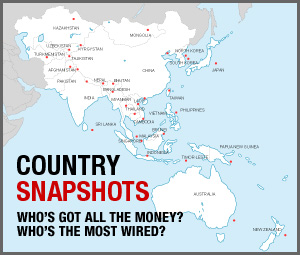Can India be Great? 
 Image: Lyle Vincent
Image: Lyle Vincent
India’s willingness to dispense with nonalignment also enabled it to end its marginal status in global politics. Though the country’s new foreign policy lacked the same grand vision of nonalignment, it was firmly rooted in the politics of pragmatism. Indeed, current Prime Minister Manmohan Singh has aptly characterized it as being based upon ‘enlightened self-interest.’ To that end, India has managed to successfully court the states of Southeast Asia after having treated them as squalid puppets of the United States during much of the Cold War era. India has also adopted a more nuanced set of policies toward the Arab-Israeli dispute. It has attempted, albeit with limited success, to improve relations with the People’s Republic of China , and it has recently demonstrated that it can, to some degree, compete with the PRC for political and economic influence in Africa. Most importantly, however, it has managed to dramatically improve relations with the United States, a country with which it had long been at odds during almost the entire Cold War. In addition, after some difficulties following its nuclear tests in 1998, the country has also managed to place its relations with Japan on a secure footing.
Pitfalls on the Road Ahead
There’s no arguing with the fact that India has been able to bring about dramatic changes, both at home and abroad. However, it still has a long and tortuous path to travel before it can achieve its grand hopes of becoming a great power. A host of barriers still lie along the road and it’s still unclear if it can overcome them.
For a start, and despite significant and sustained economic growth, a sizeable portion of India’s population still remains mired in abject, dehumanizing poverty. According to survey data from 2001, close to 26 percent of the population still lived below the official poverty line. Meanwhile, after 50 years of independence, almost 27 percent of the rural population still lacked access to safe drinking water. Despite varied efforts to promote literacy, in 2001 only about 65 percent of the population had achieved basic literacy. The list of such statistics goes on. Unless India can find ways to forge policies that address these deeply disturbing shortcomings, rapid economic growth and the consequent emergence of a robust middle class (variously estimated at between 100 million and 300 million) will amount to little.
Ironically, the emergence of this new middle class has placed even greater stress on the country’s woeful infrastructure. For example, only very belatedly has India started to transform the airports of three of its four principal cities–those in New Delhi, Bombay (Mumbai) and Madras (Chennai). Yet the very roadways and highways that connect the airports to their respective cities have yet to be commensurately improved. Similar limitations continue to dog India’s principal ports, many of which operate with antiquated equipment and docking facilities.
Apart from this persistence of endemic poverty and poor infrastructure, India faces other critical challenges in its search for great power status: its acute shortage of critical human capital. At one level, the country can justifiably claim that it has some institutions of higher education which can compete with their peers on a global basis. But these institutions are mostly confined to the realms of science, engineering and management and despite the existence of these centres of excellence, mediocrity is the hallmark of many of India’s other educational institutions. For example, with the possible exception of the discipline of economics, India lags woefully behind in the other social sciences such as sociology, anthropology and political science. Few, if any, significant contributions to these fields of intellectual endeavour have emerged from India in recent decades. Most scholarship in these areas is either derivative, or worse, still mostly descriptive and hortatory.










